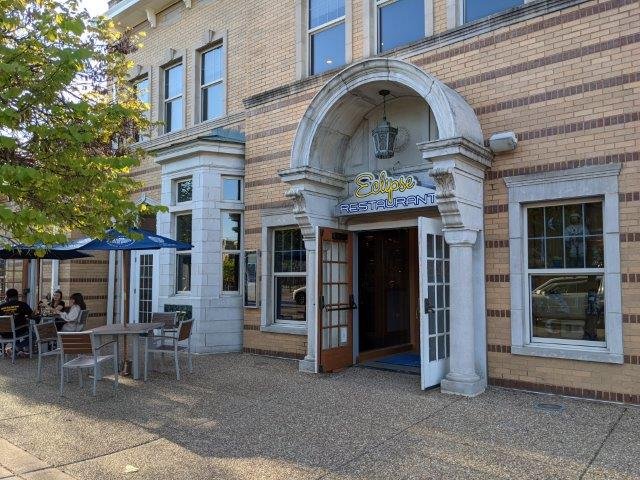
The retina is like film in an old-fashioned camera, and you can imagine if you burn a hole in the film, you don’t get a good picture. Q: Are the dangers of looking at an eclipse similar to the dangers of staring directly at the sun?Ī: The sun has enough light intensity to burn or damage the retina. That will allow you to see a shadow of the eclipse on the ground.

You take a card and place a hole in it, put your back to the eclipse and hold the card up in the air so that the sunlight passes through the hole in the card. If you don’t get the eclipse glasses, another way to participate safely is to fashion a pinhole camera. They also block harmful ultraviolet and infrared radiation. What’s special about these glasses is they act as a filter to reduce the sun’s brightness to a safe level. They’re not expensive and are widely available.
#HOW TO SEE THE ECLIPSE ST LOUIS ISO#
The safest and easiest way to get a look an an eclipse is with special ISO-certified glasses that meet the ISO 12312-2 standard. It may be tempting to look directly at the sun as the moon begins to obscure the view, but no one should look at an eclipse with a naked eye or even regular sunglasses. Q: Why is it important for people to protect their eyes during an eclipse?Ī: For many people, this is a once-in-a-lifetime event. Here, he offers his expertise on safely viewing the eclipse. Louis, said those in the path of the eclipse should get in on the watching if they’re able, but he warned that people should protect their eyes if they want to view this rare event. Kumar Rao, MD, a professor of ophthalmology and visual sciences at Washington University School of Medicine in St.

the length of time a person can witness totality will depend largely on his or her specific location, not to mention the weather. Totality, for those in a position to witness it, will last from 1:16 to 1:19 p.m.

The eclipse’s partial phase will begin at 11:52 a.m. People outside of the band will be able to witness a partial solar eclipse - weather permitting, of course. 21, within a band stretching from Oregon to South Carolina. A total solar eclipse - when our view of the sun is blocked by the moon - will be visible Monday, Aug.


 0 kommentar(er)
0 kommentar(er)
